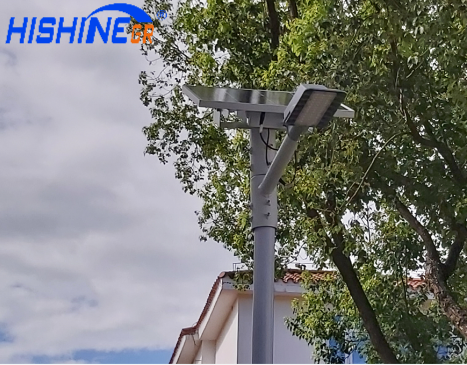At present, the batteries used in solar street lights mainly include lead-acid batteries, gel batteries, ternary lithium batteries, and lithium iron phosphate batteries. So what are the different effects of different batteries for solar street lights?

1. Lead-acid batteries: Lead-acid batteries are composed of lead and lead oxides, and the electrolyte is an aqueous solution of sulfuric acid. Its main advantages are stable voltage, low price, and suitable for low-temperature high-rate discharge; the disadvantages are that it is large in size, too heavy, and has a short service life of about 300-500 times, with a service life of about 2 years, frequent daily maintenance, and the use of obsolete batteries. Lead-acid batteries are very polluting to the environment and are not recommended to be used in large quantities. With the advancement of science and technology, they will gradually be eliminated by the market.
2. Colloidal battery: the sulfuric acid electrolyte is replaced by colloidal electrolyte, which is improved compared with ordinary batteries in terms of safety, storage capacity, discharge performance and service life. The advantages of colloidal batteries are that they are cheap and have good low temperature performance. It can be used in the temperature range of -40℃--65℃, suitable for the northern alpine regions. It has good shock resistance and can be used safely in various harsh environments. The disadvantages are troublesome installation (you need to dig a battery hole in the ground, and waterproof the battery after burying the battery), short life (generally only 2 years), and low depth of discharge (only 60%)
3. Ternary lithium battery: It has the advantages of high discharge depth, small size, fast charging and long life. The number of deep cycles of ternary lithium batteries is about 500-800 times, the life span is about twice that of lead-acid batteries, and the temperature range is -15°C-45°C. The disadvantage is that the price is high and unstable, and the ternary lithium batteries of unqualified manufacturers may have safety hazards such as overcharging or explosion or fire when the temperature is too high.
4. Lithium iron phosphate battery: high charge and discharge efficiency, small size, large capacity, high temperature and low cold resistance, wide operating temperature range, and can be used at -40°C-70°C. Long service life, strong stability, environmental protection and pollution-free, but the price is high. Lithium iron phosphate batteries are divided into 3 grades. Grade A products can be used more than 1500-2000 times, and the life span is about 8-10 years; grade B products can be used more than 300 times, and the service life is about 1-3 years; Products with poor reliability are generally not recommended for use.
To sum up, different types of batteries for solar street lamps have their own advantages and disadvantages. Hishine Group Limited solar street lamps basically use lithium iron phosphate batteries. The solar street lamps in the picture do not use lithium iron phosphate batteries, which have long service life, reasonable price and are environmentally friendly. There is no pollution either.
Author 2025-06-12
Hishine Group Limited Will Meet Customers In Mexico City.Hishine is thrilled to announce its participation in Expo Eléctrica International 2025, Latin America’s premier trade fair for power and lighti...
Author 2025-05-12
Our recent business trip to Saudi Arabia proved to be a pivotal step in strengthening partnerships and exploring opportunities in the Kingdom’s rapidly growing energy and lighting markets. Below are t...